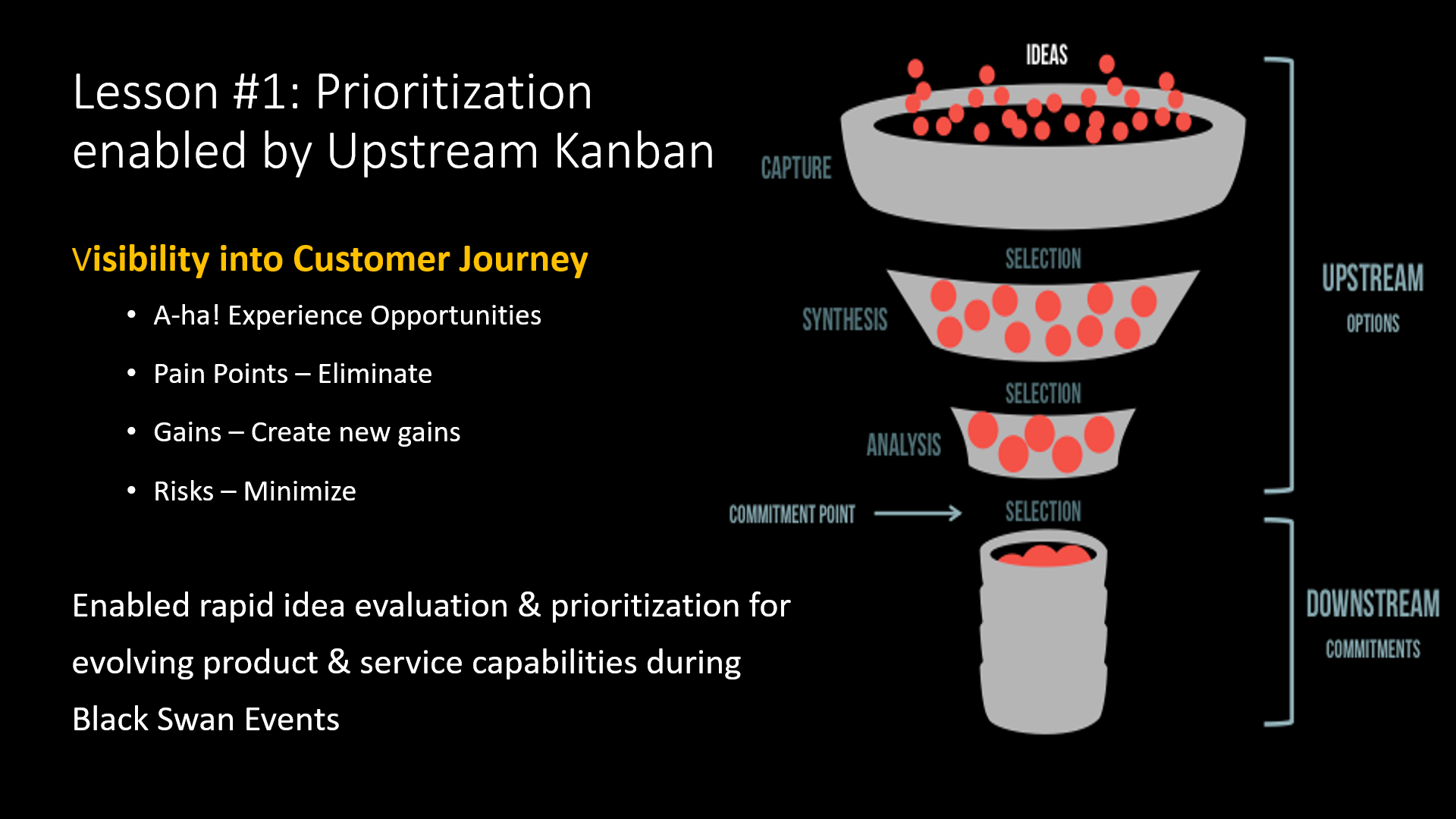Introduction
In 2020, the world saw an unprecedented situation unfold at a rapid pace in the form of a global pandemic. The scale, speed and impact of change caught individuals, families, communities, businesses and even governments off-guard. All of them were forced to grapple with reality one way or the other. Events such as these are called ‘Black Swans’, from Taleb’s famous book ‘The Black Swan – The Impact of the Highly Improbable’. In this article, we will examine some patterns that emerged as the event unfolded and how fundamental Lean and Agility principles can help navigate through such situations. More importantly, as we move into a ‘new normal’ where black swans will be the norm, it is pertinent to have a handy toolkit that will help us navigate and fly.Black Swan Event – Background and Definition
Let us begin with a story from history. For a long time, Black Swans were imaginary creatures in the larger part of the civilized world. The term was used as a metaphor to denote impossibilities, in general. This was simply because the word ‘Swan’ captured images of a graceful white bird that the world had already seen. In 1694, the Dutch East India Company lost a ship with 325 people on board somewhere near Australia and a seafarer named Willem was commissioned to find and rescue any survivors. Around 1697 while on the rescue voyage, he and his crew ventured up what is today known as the Swan River. While they didn’t find any trace of the lost ship or its survivors, they spotted something unprecedented, a swan – A Black Swan! Since then the metaphor Black Swan has denoted something everyone thinks and perceives is just impossible, which later can get disproved. Fast forwarding to current times, the term Black Swan was back in the limelight, literally, when Nicholas Taleb brought it into popular narrative in his bestseller ‘The Black Swan – The Impact of the Highly Improbable’. As an expert in probability theory and financial markets, Taleb formalized the Black Swan concept. A Black Swan can be defined as an event that is characterized as follows:- Extreme rarity – Low Probability event
- Event with Extreme consequences – Catastrophic/ High Impact
- Highly unpredictable
- So unlikely as to not reasonably warrant expensive preventive measure
- Post facto there will be claims of predictability and ‘Model High Ground’ where people may say “we saw that coming”
Black Swans and Businesses
Black Swan events are the ultimate test to any business, be it the vision/direction, resources and the ability to respond. We call this the ‘3-C stress test’ for a business. 1. The first C is the Compass and denotes Business Vision and Direction 2. The second C is the organization’s Capability. Capability here includes processes, practices, tooling, people skills, competencies, product and platform capabilities, and so on 3. The third C is what we term as Creative response. It is about how businesses respond creatively in the face of unprecedented situations In short, it is no exaggeration to say that Black Swan events challenge all aspects of a business. Let’s look at how each of the challenge can be addressed.Addressing Challenge to the Compass
Insights into the customer experience journey becomes extremely valuable during a black swan event. When a black swan event occurs, there is little time or runway for the business to map the entire customer experience journey, more so, figuring out what has changed. It is extremely essential that this effort must be given the necessary focus during normal times. A ready customer journey map will enable businesses in two ways: 1. To rapidly revisit changes 2. Quickly tweak as appropriate during an unusual event This will then help quickly drive the prioritization / reprioritization of product and service ideas. Therefore, the Customer experience journey must be the Compass that shows the direction Business takes. The opportunities identified from the Customer Experience Journey maps feed into the Ideas funnel. Organizations can extend the Delivery Kanban principles upstream to include the ‘Ideas Funnel’. This is also referred to as Upstream Kanban. Upstream Kanban enables evaluation, prioritization and selection from among many ideas for implementation. Once feature/service ideas get quickly prioritized and selected in Upstream Kanban, they can then be pulled by the Delivery Kanban downstream for development and pushed into production.
Addressing Challenge to Capability
Responding becomes inevitable during a black swan event. However, the speed of response decides the trajectory and the future of the business. Borrowing ideas from sports and fitness, muscles in the human body are built one fiber at a time. Workouts, rest and nutrition must blend together in a sustainable manner to build muscle. Likewise, in a business context, ongoing investments in sustainable practices with continuous improvement will build the organization muscle. Organizational agility comes from strong muscles the have been built over time. What muscles should we focus on and build during ‘Business As Usual’? From what we have seen, following are worth considering:- Ability to prioritize at every level – often we see organization starting numerous initiatives during good time. Seldom are these prioritized, monitored and tracked to closure. Doing these well during Business as usual helps them extensively during business unusual
- The next important muscle – is the ability to learn, unlearn and relearn
- The power of these two muscles get multiplied when supported by collaboration and empowerment muscles
- Cadence based retrospection and adaptation that enables building strength fiber by fiber.
Addressing Challenge to Creativity
The ability to creatively innovate during a Black Swan event can decide the fate of the organization While creativity is all about coming up with cool ideas, innovation is the additional ability to translate those ideas into tangible business value. Innovative business have a pervasive cultural mindset of experimenting and validating creative ideas on an ongoing basis. Often during business as usual, the focus is on incremental innovation (i.e. small, minor improvements to what is already existing), without much thought or investment into disruptive innovation. Creative response is in from of both incremental and disruptive innovation. However, building this empowered culture cannot happen overnight. It requires strong support from a leadership that has a VUCA worldview coupled with a clear vision and accompanying set of values. In short, there is a need for businesses to create a healthy internal ecosystem that fosters creative innovation even during good times.Summary and Conclusion
To summarize, what can we learn from Black Swans? The following is worth remembering: 1. Rapid response is essential, almost inevitable during a black swan event 2. Insight into customer journeys helps with the ‘what’s’ of that response 3. Upstream Kanban helps prioritization of the response 4. Building capabilities during business as usual is essential 5. Evolving the internal ecosystem that fosters continuous innovation improves the odds of success In conclusion, it is worth reiterating that Black Swan events are impossible to plan for in all respects. However, attention to fundamental values and principles in good times can not only improve the odds of an effective response but also help chart a sustainable course for businesses.This article is co-authored by Mahadevan Periaswamy and Rajsekhar Janaswamy, based on their presentation titled ‘Travel Tales – Flying with Black Swans’ which they made at Kanban India 2020.
